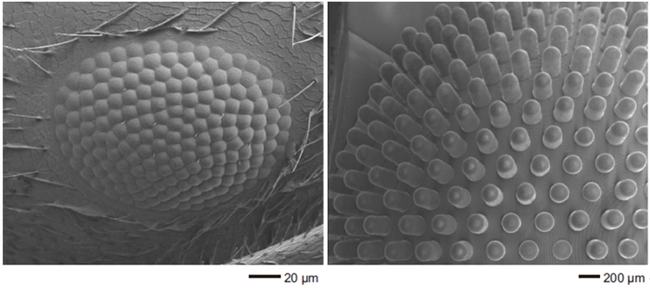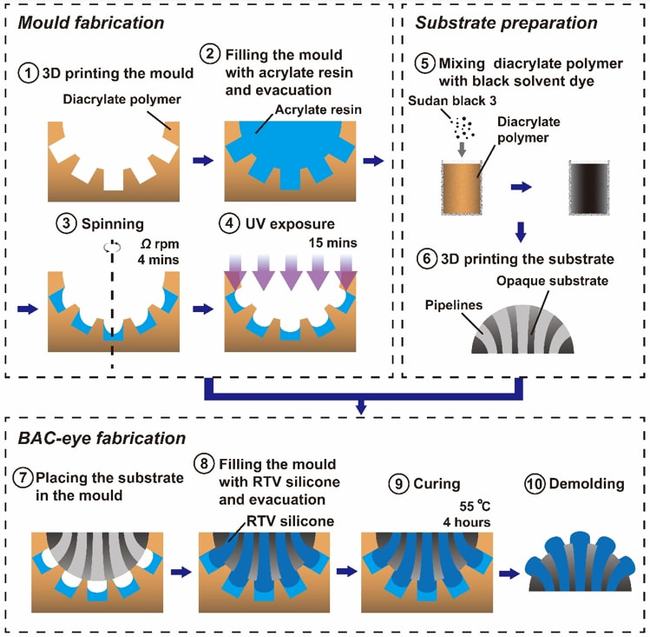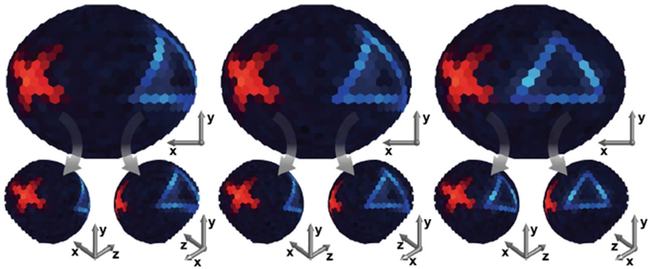After 500 million years of evolution, the compound eyes of arthropods have evolved into a set of imaging systems with complex structures and excellent functions. Through compound eyes, arthropods can gain all-round insight in a panoramic mode with a large field of view, combined with the ability of depth perception. surrounding things. Due to the many advantages of compound eyes in imaging, researchers have continuously proposed various schemes for preparing bionic compound eyes. However, the structure of natural compound eyes is too complex, and traditional micromachining techniques cannot realize the real structure of natural compound eyes, and the bionic compound eyes developed in the past cannot be applied For ordinary optical components and image sensors, the application of bionic compound eyes is greatly limited.
Recently, the ultra-precision optical manufacturing team led by Professor Zhang Dawei from the University of Shanghai for Science and Technology, under the leadership of Academician Zhuang Songlin, Professor Dai Bo and his colleagues, Zhang Liang and other postgraduate students, and the research group of Professor Tony Jun Huang from Duke University, and Zhao Cheng from the University of Dayton. In cooperation with Professor Long’s research group and researcher John Mai of the University of Southern California, a new method based on microfluidics was proposed.3D printingThe microstructure processing technology was used in the preparation of biomimetic compound eyes.

The specific processing technology of the bionic compound eye is as follows: using surface projection micro-stereolithography3D printingtechnology (nanoArch S130, P140,
Morgan
Precision) to produce ultra-high-precision compound eyes
mold
and base. The mold is a hemispherical pit, in which a cylindrical array is densely distributed; the base is a hemispherical body, which contains the same amount of micro-channels as the cylindrical array. Then, the mold is further processed, the photosensitive resin is filled in the pit, and the glue is spun with a glue dispenser. When the speed of the glue dispenser is properly controlled, the glue in the pits will be completely thrown out, and part of the photosensitive glue will remain in the cylindrical array. After a period of rest, the liquid level of the glue in the cylindrical array will sag due to the capillary force. After UV curing, the compound eye mold is complete. Finally, the base of the hemisphere is buckled upside down in the pit, filled with elastic resin, and after thermal curing, the hemisphere is taken out to obtain a bionic compound eye.
In this work, the researchers achieved a highly bionic compound eye with as many as 12,000 sub-eyes in a hemispherical compound eye with a diameter of 5 mm. The structure is highly similar to the natural compound eye, with core elements such as cornea lens, crystalline cone, and rhabdome. In addition to the structure, the obtained bionic compound eye is also comparable to the natural compound eye in function. The researchers combined the bionic compound eye with the traditional two-dimensional image sensor to achieve a large field of view and full-color imaging, and also demonstrated the precise positioning of the light source in three-dimensional space.


The result was published in Nature Communications under the title of “Biomimetic apposition compound eye fabricated using microfluidic-assisted 3D printing”.
Article link:
https://www.nature.com/articles/s41467-021-26606-z
Nature Communications volume 12, Articlenumber: 6458 (2021)
(responsible editor: admin)


0 Comments for “University of Shanghai for Science and Technology “Nature Communications”: Fabrication of bionic compound eyes based on microfluidic assisted 3D printing technology”